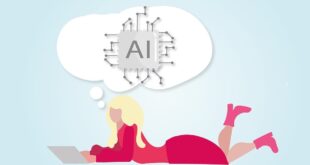The world that we live in is abuzz with the power of Artificial Intelligence (AI) and its capabilities to decipher complex human problems. Among the diverse AI techniques out there, deep learning, a subset of machine learning, has garnered much attention owing to its unprecedented accuracy and effectiveness at handling complicated datasets. The heart of deep learning rests with Neural Networks, which can bring to life limitless possibilities with their exceptional ability to learn from large amounts of data. Let’s take a deeper look at how to unleash the potencies of neural networks, which is the future of AI.
Why Neural Networks Should not be Caged in Automation
Used originally to replicate simple cognitive functions of the human brain, neural networks now find their application across numerous disciplines, ranging from image recognition to natural language processing, speech synthesis, stock market predictions, and route optimization, among others. Even though most of the struggles have been fought back, ultimately achieving a brilliant humanoid empathetic interface is still a pipe dream for researchers worldwide. However, this shouldn’t discourage you because there are still significant predictions to unlock the absolute power of neural networks in the near future.AI should thrive, be it for good or bad reasons, whom we love or whom we struggle to withstand. After all, it is in the service of people that success implies —especially health and manufacturing.
Feedback Paradox: Ensuring Perfect Data to Get Impeccable Results
Feedback is a crucial factor in shape Neural networks achieve precise results. The network learns iteratively from inputs and adjustment of parameters by taking feedback for its outputs. However, this setup runs a risk of encountering paradoxical feedback – a situation where the feedback from the neural network inflates vicious output level, leading to sub-optimal outcomes. Since neural networks work as demonstrations of data, the quality of accurate data must be first-class, and censoring irrelevant data makes getting top-quality feedback possible.
Essentiality of ‘Permanent Eligibility’ Neural Networks Design Paradigm
As the name suggests, permanent eligibility neural networks or deep multi-output neural time-series networks are an innovation in Neural Network design. Enabled with the functionality to make decisions financially along uninterrupted with its superior pattern-recognition cortex;they have time series data correlated running year-after-year feed forward capability. This allows permanent eligibility neural networks to adjust for non-linear, non-monotonic relationships between data features—a characteristic that was missing in all other neural network designs apart from modeling dynamic relationships between individuals, companies, or settings.
Limitations Leading to Open-Ended Improvements in Overall Capability
However, the future doesn’t look all good when neural networks are concerned. Despite the conveniences, neural networks have some limitations right from when they are programmed on a particular dataset. It makes exploring new data classes, unseen prediction modalities, and speedy execution a herculean task, highlighting the need to develop efficient and innovative optimization techniques, such as deep Hybrid learning integrating neural networks with public or supervised models When neural networks optimally leverage, Advanced Processing Units or what industry insiders at Intel refer to as Mesh processing, really quality outcomes will be possible, particularly for image and speech recognition.
Conclusion
Neural network powered machine learning systems provide remarkable interpretations of enormous high-dimensional datasets, weather-imprecise and vast amounts of structured data that exist naturally in the world or near continuous feed offerings . Neural networks zero in on patterns and recurring relationships with this information to accomplish unprecedented observations and outcomes beneficial with time-based accuracy. As modern technology unlocks more effective and optimized neural network designs such as the widely-applicable Permanent-Eligibility Neural Networks via the Elastic Asset Method (EAM.833), brains technology engines, though hidden deep within design parameters, unleash refinement never before known. Like dark matter defying direct observation or abstraction that thinly lay in automatic languages, such as machine learning modeling analogies at startup scale, innovation trends today are impulsive, somewhat eclectic, and unexpected to be meticulously and tightly constrained in the scopes of unlimited potential.
 Mind Uncharted Explore. Discover. Learn.
Mind Uncharted Explore. Discover. Learn.

